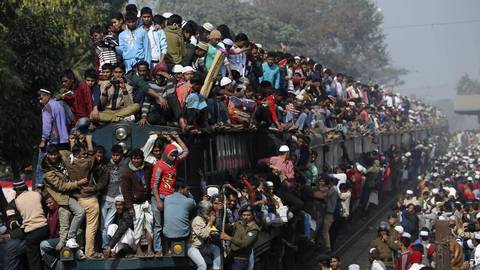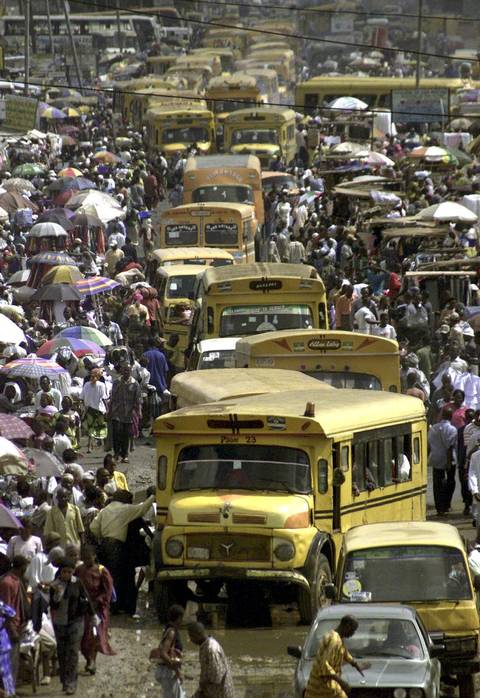This was first re-published in English for the Gates of Vienna:
The following essay was first published in the regional daily Stavanger Aftenblad in Norway. Parts of the text were taken from Peder Jensen’s (Fjordman’s) book Vitne til vanvidd. This book is now available for a Scandinavian audience in Norwegian as both e-book and printed book. For a limited period of time, the printed book can also be ordered signed by the author. A shorter version of this book, which deals with the Anders Behring Breivik case and Muslim immigration to Europe, will later be published in English with the title Witness to Madness.
Many thanks to Liberty DK for the translation.

The New Migration Period
by Peder Jensen
It is totally unrealistic to solve social problems through the migration of billions of people. Most social problems in southern countries must be resolved locally.
Before the Neolithic Revolution began 10,000-12,000 years ago, we were all hunter-gatherers. The number of people on this planet at that time has been estimated to between five and fifteen million human beings. A single major city such as Tokyo, Beijing, Seoul, Karachi, Mexico City, Lagos, Mumbai or Cairo now has more inhabitants than this.
The global population reached one billion people for the first time around the year 1800. From the time of the Neanderthals, it took all of the Earth’s peoples hundreds of thousands of years to achieve this population size. Since the Industrial Revolution, the global population has, over the past two hundred years, grown dramatically.
“The world’s population is now growing at around one Roman Empire every year”.
In the coming three decades, it is expected that Africa’s population alone will increase by more than one billion people. Combined with a huge population growth, modern means of transport are now creating the largest and fastest human migrations the world has ever experienced since our species first came into existence.
Population estimates for the Roman Empire at the beginning of our era range from 45 million to over 100 million people. A relatively common estimate is 60-80 million. Various estimates suggested a global population growth of between 70 and 80 million in 2015. The world population is thus growing at a rate of roughly one Roman Empire every single year. Today’s migrations are much larger and faster than the Migration Period we associate with the fall of the Western Roman Empire.
“The population growth in Egypt in less than a generation is thus larger than the population of all the Nordic countries combined.”
200,000 more per day
Let us stipulate that the global population increased by 73 million people in 2015. This corresponds to a global population growth of over 6 million people per month, around 1.4 million people per week, nearly 200,000 per day, more than 8327 per hour, almost 139 per minute and 2.3 per second. If you spend 30 seconds on grabbing a cold drink in the fridge, the planet’s population will have grown with perhaps 69 people during this time. If you spend half an hour on eating lunch, there will be around 4,164 more human beings on Earth after your lunch break.
[Photo caption: The population of Nigeria is now approximately 182 million, compared with 89 million fifteen years ago, an increase of approximately 2.5 percent per year (CIA, The World Factbook). And four out of ten would move to a Western country if the opportunity arises. George Osodi, AP / Scanpix]
In the year 2050, the Democratic Republic of the Congo is expected to have joined Nigeria and Ethiopia as one of the world’s ten most populous countries. Despite stagnating population numbers in Europe and East Asia, analysts expect that the world population will increase by billions of people during this century. Demographers believe that the Earth’s population may grow to between 9.6 and 12.3 billion people by 2100, perhaps more. Africa’s population could grow tremendously to between 3.5 and 5.1 billion people. By 2050, it is estimated that four out of ten of the world’s children could be an African.
In 1897, there were 9.7 million Egyptians. In 1996, Egypt’s population numbered 59 million people. The country surpassed 87 million in 2014 and could have 137 million inhabitants in 2050. This huge population growth contributes to political instability. Between them, Norway, Sweden, Denmark, Finland and Iceland had, at the beginning of 2015, a population of about 26 million people, including recent immigrants. The population growth of a single Arab country in less than one generation is thus larger than the population of all the Scandinavian and Nordic countries combined.

